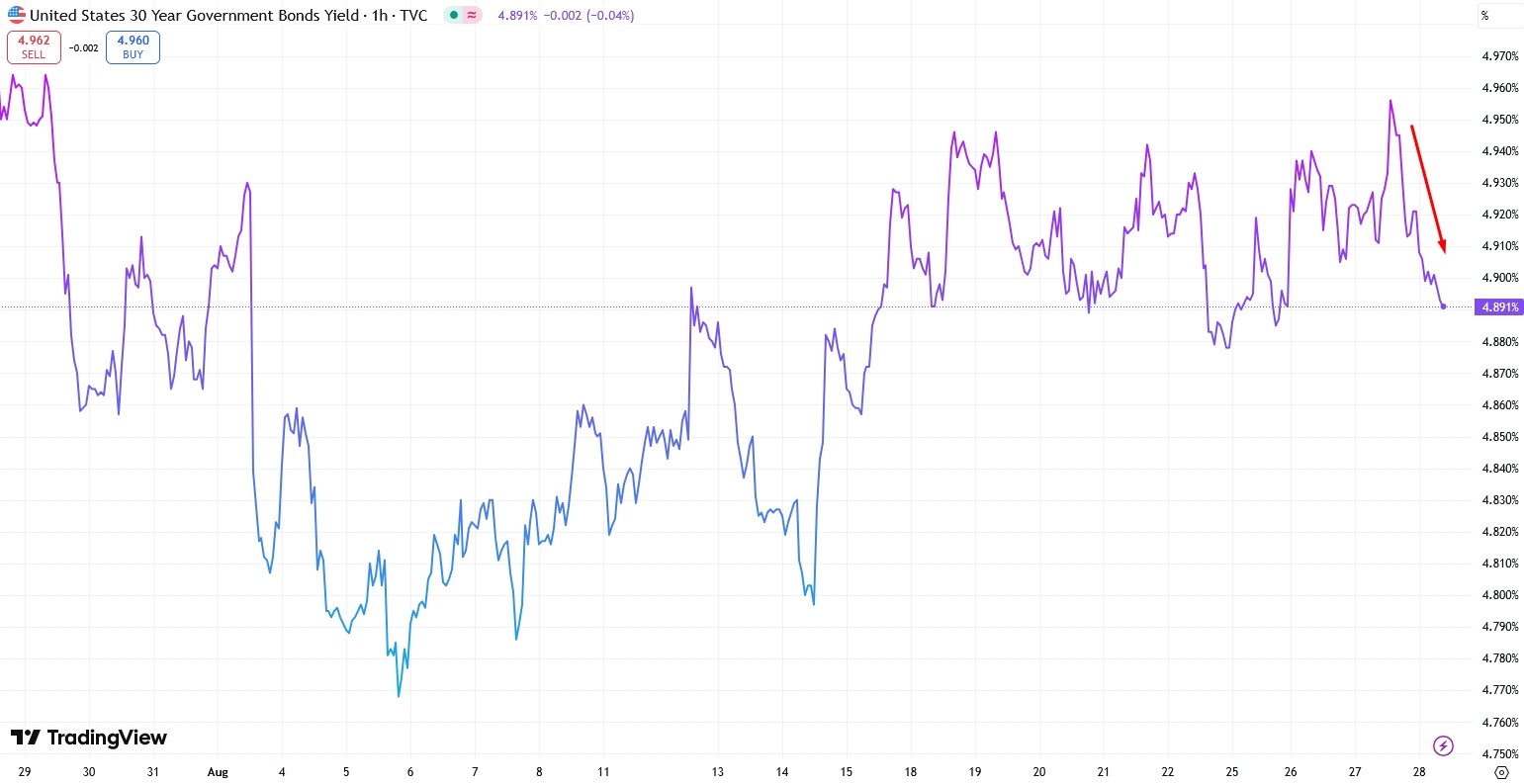Why Investors Aren’t Fazed by Trump Firing Lisa Cook From Fed Board

TradingKey - After U.S. President Donald Trump announced the immediate dismissal of Federal Reserve Governor Lisa Cook, the long-term bond market reacted first with a steepening yield curve, while risk assets like U.S. equities did not suffer the expected shock. Now, even long-term Treasury yields have retreated to pre-event levels, suggesting the market is becoming immune to concerns over Fed independence.
Under the expectation that a more politicized Fed could push for more aggressive rate cuts, the natural market response was for short-term yields — more sensitive to policy rates — to fall, while long-term yields rose on higher inflation expectations.
After Trump announced the firing on Truth Social on August 25, the 30-year Treasury yield rose steadily, peaking at 4.96% on August 27, but then quickly reversed. As of August 28, the U.S. 30-year Treasury yield had nearly returned to its pre-crisis level, trading at 4.89%.

U.S. 30-Year Treasury Yield, Source: TradingView
After describing the market impact as a “boiling frog” scenario, The Wall Street Journal offered several explanations for the market’s calm reaction.
First, Trump’s push for rate cuts and interference in Fed decisions has already been priced in. Given Trump’s repeated public attacks on Fed Chair Jerome Powell, his intent to politicize the Fed has long been transparent. Therefore, his attempt to remove a Fed governor accused of misconduct is not surprising.
Although Cook is challenging the dismissal in court, U.S. Treasury Secretary Scott Bessent recently stated that Cook has not denied the mortgage fraud allegations.
Second, a Trump-aligned majority on the Fed Board is likely by May 2026, regardless of Cook’s fate. With Christopher Waller and Michelle Bowman already in place, and Stephen Miran highly likely to fill the remaining vacancy, the Trump camp effectively holds three seats.
Even if Trump doesn’t target Cook, Powell’s term as Chair ends in May 2026, and tradition suggests he would then leave the Board (though not required). Trump would likely appoint a fourth ally, securing a majority.
Third, as previously reported, the legal basis for a president to fire a Fed governor is unclear. Trump’s move may not succeed, and Cook is fighting back. Her legal team argues the action lacks both factual basis and legal authority.
Several senators have warned that if the White House succeeds in removing Cook and installing a loyalist, it would violate the Federal Reserve Act, strip the Fed of its independence, and endanger all Americans’ savings and loan rates.
Whether the president has such power may ultimately be decided by the Supreme Court, which could take these warnings seriously.
Additionally, Trump’s focus on Cook diverts attention from Powell, and the market remains more focused on the Fed Chair’s actions.
Another “rationalization” is that Trump’s actions are aimed at pushing rate cuts, which now have both economic and political justification.
Fed Chair Powell unexpectedly shifted his stance at last week’s Jackson Hole symposium, signaling openness to a September rate cut by emphasizing growing risks to the labor market.
These factors help justify the market’s muted reaction. However, The Wall Street Journal highlights a critical risk: if a politicized Fed’s impact goes beyond the expected “short rates down, long rates up” scenario — and instead begins financing government spending like central banks in Argentina, Turkey, or Zimbabwe, rather than controlling inflation — the result would be “an absolute killing.”







